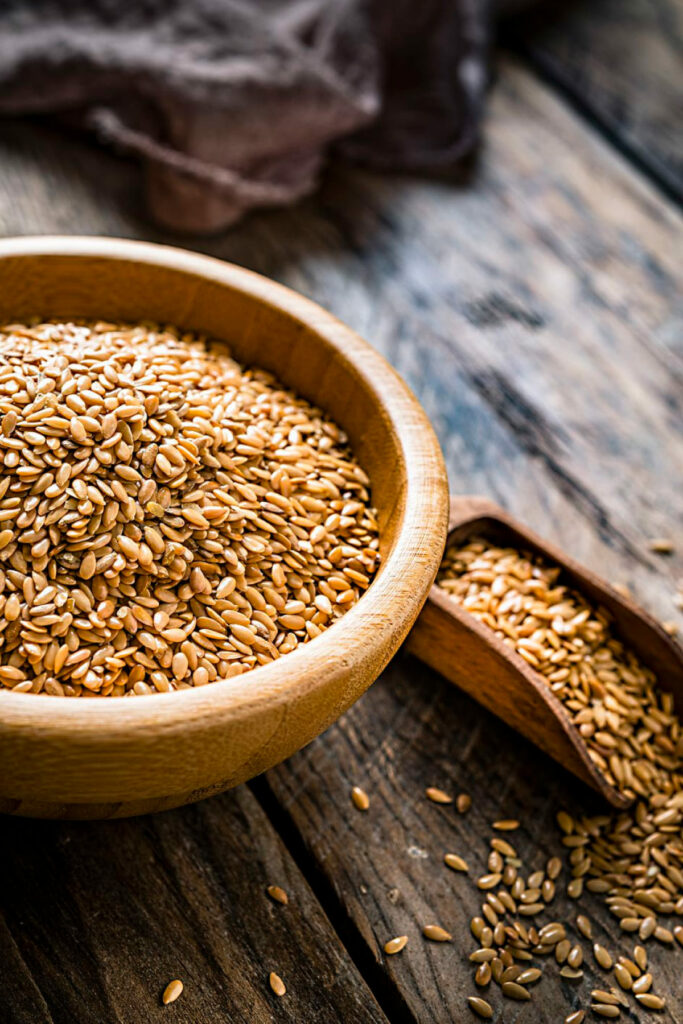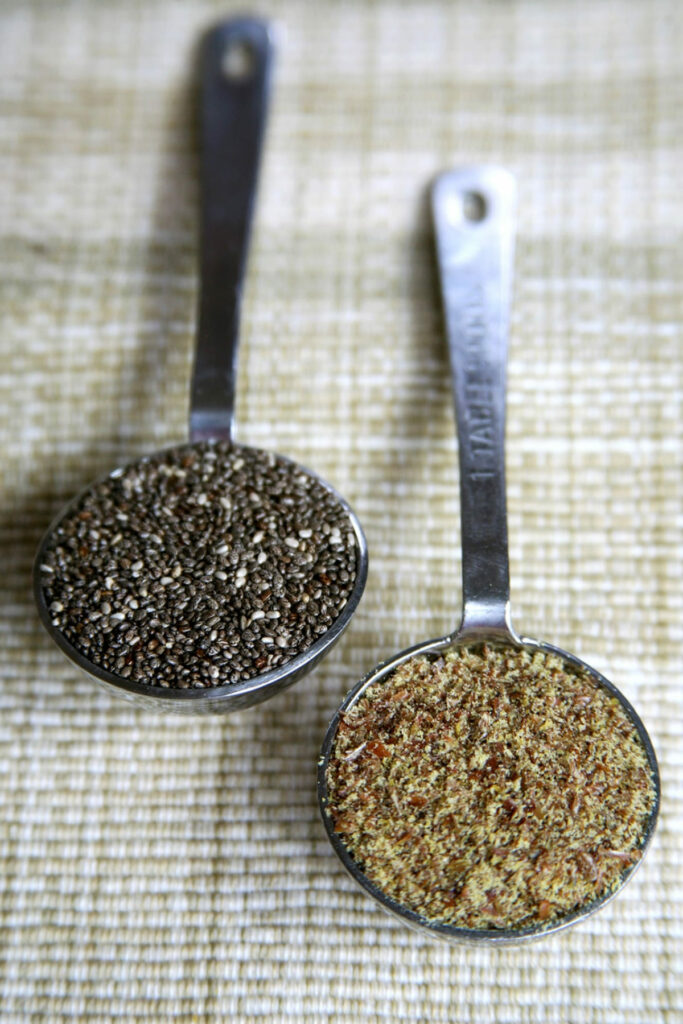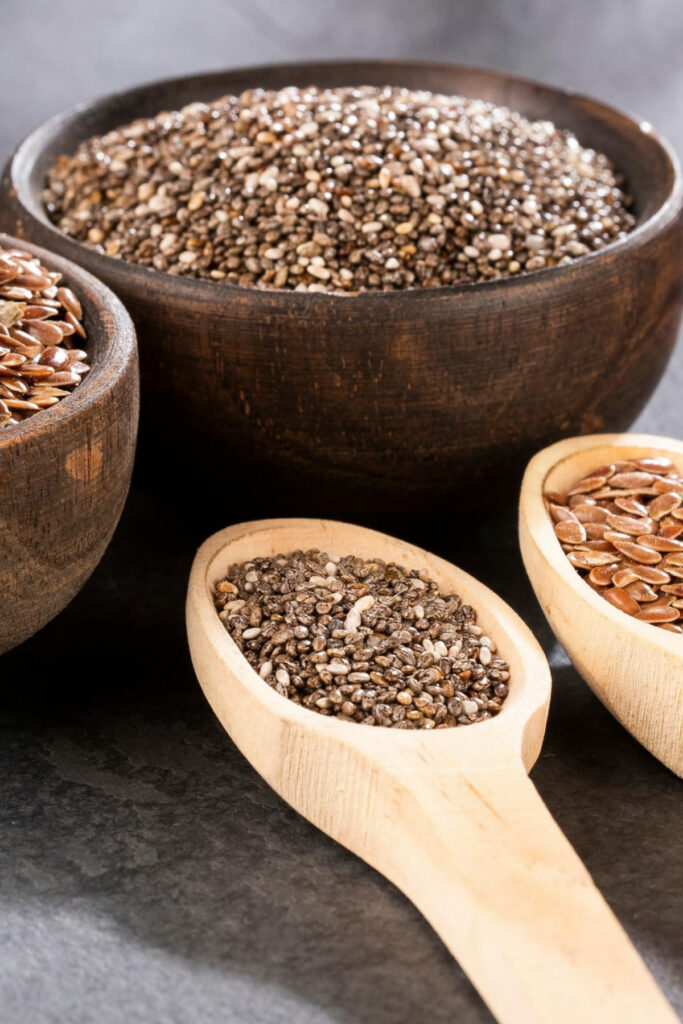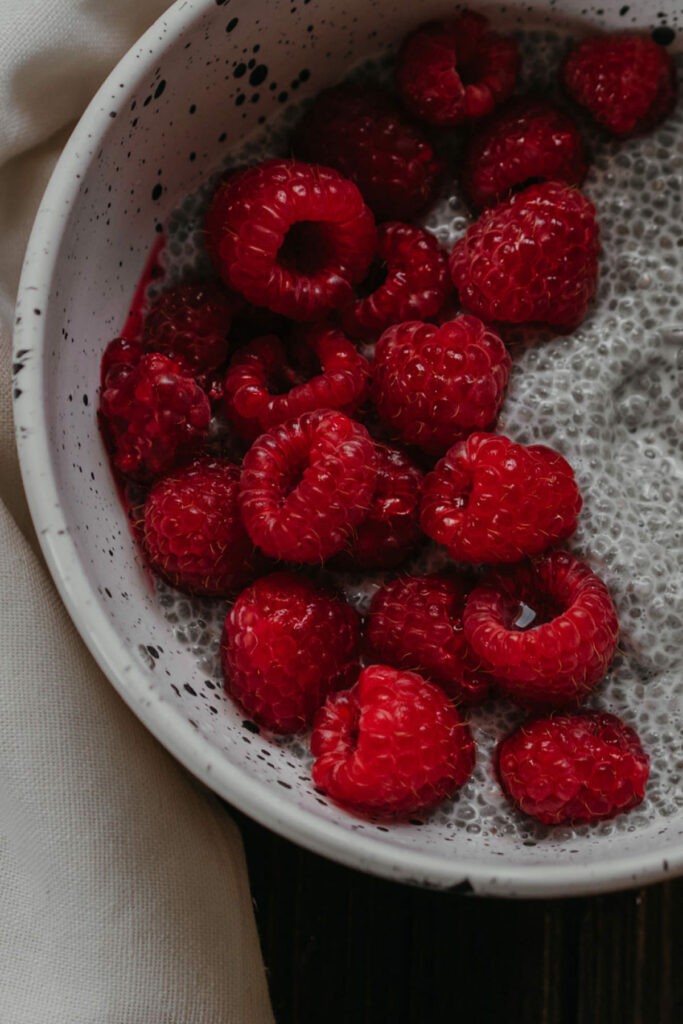The Flax seeds vs chia seeds dilemma have been around for a long time, mainly because both sources provide great body benefits. However, we always tend to lean more towards a single option, but the time has come to clarify its doubts.

Although both seeds are great for body and skin health, it’s crucial to know their differences to get the most out of their applications. Both sources share a natural origin, are highly healthy for the body, and are very easy to prepare, so stick around to discover which one is best for you.
Differences between chia seeds and flax seeds
The most significant difference between flaxseeds and chia seeds is their appearance. While chia seeds are smaller, darker, and rounder, flaxseeds are elongated, flattened, and lighter in color.
In terms of flavor, both have a neutral and earthy flavor. However, chia seeds have a slightly more acidic taste than flaxseeds. Flaxseed tends to become soggy when cooked or submerged in water and develop a jelly-like texture. In contrast, chia seeds can stay dry for longer.

The most significant difference between both seeds is their shelf life. While chia seeds can last up to four years with good storage, flaxseeds have a maximum shelf life of one year.
On the other hand, when we refer to its nutritional differences, flaxseed provides a higher fiber level. In contrast, chia seeds are good, thanks to their stories of phosphorus and calcium.
Nutritional value
Although both seeds have specific visual differences, we must analyze their nutritional value to ensure what they are contributing to our body. How much of what you want to achieve, or the applications you want to practice, you will be able to choose one of both seeds to obtain the best results.
Nutritional value of chia seeds per 3 tablespoon
• Fibers: 38 g
• Calcium: 631mg
• Vitamin B2: 0.2mg
• Phosphorus: 989 mg
• Iron: 6.5mg
• Vitamin A: 0.1mg
Nutritional value of flax seeds per 3 tablespoon
• Fibers: 27 g
• Calcium: 255mg
• Vitamin B2: 0.1mg
• Phosphorus: 642 mg
• Iron: 5.7mg
• Vitamin C: 0.6mg
• Vitamin E: 0.3mg
• Potassium: 813mg
• Copper: 1.2mg
• Zinc: 4.3mg
As we focus more on improving the appearance of skin and hair and increasing the body’s defenses, our best option will be flaxseed. On the contrary, if your interest is to improve your eating habits reduce cholesterol, blood glucose, or triglycerides, the best option will be chia seeds.
Chia seeds vs. flax seeds: Greatest benefits of both
By themselves, both seeds offer significant benefits to the body, but combining and balancing them in our daily diet helps maximize these benefits. However, it is crucial to know how each one benefits us the most to understand better how to apply them.

Benefits of chia for your health
It is one of the healthiest fats in a balanced diet. They have a high omega-3 and omega-6, benefiting the cardiovascular, respiratory, and blood systems. It is helpful to prevent chronic heart disease or heart attack in old age.
They have excellent antioxidant properties beneficial for skin, cell, and hair care. Thanks to their protein levels, they maintain the elasticity and mobility of the muscles and prevent the deterioration of the joints during old age.
These seeds strengthen the intestinal tract and regulate digestion thanks to their high fiber content. It is helpful for gastrointestinal diseases, constipation, or colic after meals.
These seeds are perfect during pregnancy, obesity, and diabetes, especially in the case of suffering from cancer, inflammatory processes, or cardiovascular conditions. It works as a cleaner natural organism and balances all the values of the body to keep the metabolism in a healthy rhythm.
Benefits of flaxseeds for your health
Flaxseeds are viral thanks to their benefits for skin and hair. They have high levels of antioxidants, minerals, and vitamins that improve the appearance of the skin in just a few applications.
Adding homemade flaxseed gel to beauty routines reduces the appearance of wrinkles and removes spots caused by the sun. It is also helpful for lightening stretch marks, strengthening and plumping the skin, and preventing acne breakouts.
On the other hand, they benefit the body’s nervous, immunological, blood, and cardiovascular processes. It helps strengthen the heartbeat, making it beneficial to prevent heart attacks or heart failure. It provides omega-3 and helps regulate HDL cholesterol levels.
Best ways to prepare them flax seeds vs. chia seeds
There are many ways to prepare and consume these seeds. Depending on the use you want to give them, you will have a completely different way to eat them. However, you can enjoy many of their benefits by eating them raw straight from a pain.

1. Gel
Flaxseed gel or chia gel is very effective for topical application. You have to boil a cup of the seed of your choice and two cups of water. The seeds will soften, creating a jelly-like coating that you can use on your skin or hair.
This type of application is related to body facial beauty care. It is helpful to add it to beauty routines to strengthen, heal and improve both the skin and the hair.
2. Water
This way is one of the most popular since they only need to be soaked for several hours to release their compound. Drinking this water daily, preferably on an empty stomach, favors the absorption of nutrients and weight loss. It is helpful in cases of suffering from irritable bowel syndrome.
3. Powder
You can add them to any recipe you want to prepare by grinding the seeds. You can even add several tablespoons to your smoothies and enjoy its benefits most deliciously. Contrary to popular belief, grinding the seeds does not lose any nutritional value.
4. Wet
Many people prefer to eat them straight, but that earthy texture may not appeal to many people. However, moistening them makes them easier to chew and digest. You can add them to your mid-afternoon snacks and enjoy their long-term benefits.
When thinking about the battle of flax seeds vs. chia seeds, we conclude that both are beneficial and necessary for our health. Both can be extraordinarily medicinal and beneficial for the skin and the body.
